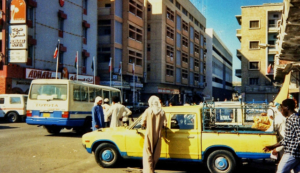Top 10 Facts About Living Conditions in Bahrain

Bahrain is an archipelago made up of 33 small islands located between Saudia Arabia and Qatar in the Persian Gulf. In 1971, Bahrain declared its independence from the United Kingdom and then in 2002, they established themselves as its own kingdom. Known for its petroleum exports, they were the first Arab country to discover it in 1932. These 10 facts show what living conditions are like in Bahrain.
Top 10 Facts About Living Conditions in Bahrain
- The International Labour Organisation states that Bahrain’s unemployment rate is at 7.5 percent based on its econometric models. The majority of its unemployment comes from both the female and male age group of 15-24 where it is 25.4 percent and 32.3 percent. The government has adopted policies such as the National Employment Scheme of 2006 focusing on broader labor reform by covering all workers to improve its living conditions in Bahrain.
- Shiites, a group of people in the Bahrain society who make up 75 percent of the Muslim population, claims that the government is discriminatory against them. They are apart of the poorest population of the Bahrain society. One of the reasons behind this group’s poverty was that when the oil boom occurred, the country employed these foreign Shiites because they were not formally educated and the ruling Sunni treats them with suspicion.
- The adult literacy rate has risen from 69.8 percent in 1981 to 95.7 percent in 2015, which shows an annual growth rate of 8.49 percent. This is a result of the government’s focus on education and growth in the economy during those years. The country has benefited from its education growth, as it has improved the living conditions in Bahrain.
- The oil and natural gas industries play a huge role in boosting the country’s economy and thus, the living conditions in Bahrain, as it is involved in 85 percent of its budget revenues. The country’s oil refinery was opened in 1935 and has a capacity of around 250,000 barrels a day.
- Although Bahrain does not experience extreme poverty, around 12.2 percent of its population lives on less than $5 per day. There is an income inequality where the wealthiest 20 percent own 41.6 percent of the population’s income. Bahrain’s policies that they have adopted were recognized by UNHABITAT, who saw its efforts in alleviating the poverty of the urban poor through legislation that creates jobs.
- Bahrain’s health insurance policies have resulted in universal health coverage for the whole country. In 2018, the government passed the Health Insurance Law (“The Law”) that provides both non-government and government coverage in hopes to create a more competitive economic place.
- Bahrain has a problem with childhood obesity, as 35.3 percent of children aged 5-19 are determined obese according to the Nutrition Landscape Information System’s 2015 report. This is alarming, considering that there a lot of negative health qualities associated with obesity such as high blood pressure and heart problems.
- It is reported that Bahrain will be facing a water crisis by 2040 because of the handling of its water sources. Between its shortage in freshwater resources and its wells drying up, in the near future, Bahrain might experience challenges in acquiring drinking water and sanitation.
- The education system in Bahrain is considered to be one of the highest levels in the Persian Gulf. Not only is education free for all children living in Bahrain, but the Ministry of Education also provides textbooks in each subject for every student enrolled in public schools at no cost. Public education is segregated in terms of gender, and boys and girls are taught by a staff of the same gender.
- Women face discrimination in the workforce as they only make up 33 percent of the private workforce in Bahrain. Even though the country has high graduation rates of 60 percent in 2013-2014, women also see discrimination in terms of its bonuses and pay compared to men in the same positions.
For Bahrain, its petroleum exports have benefited the economy as it results in 70 percent of the government’s revenues and 11 percent of its GDP. Along with its petroleum exports, they have heavily invested in tourism and financial sectors in its city in the past decades. Bahrain is a country that is on the up and coming, but it still needs to address water shortage in its future and discrimination toward women.
– Nicholas Ponzio
Photo: Flickr
